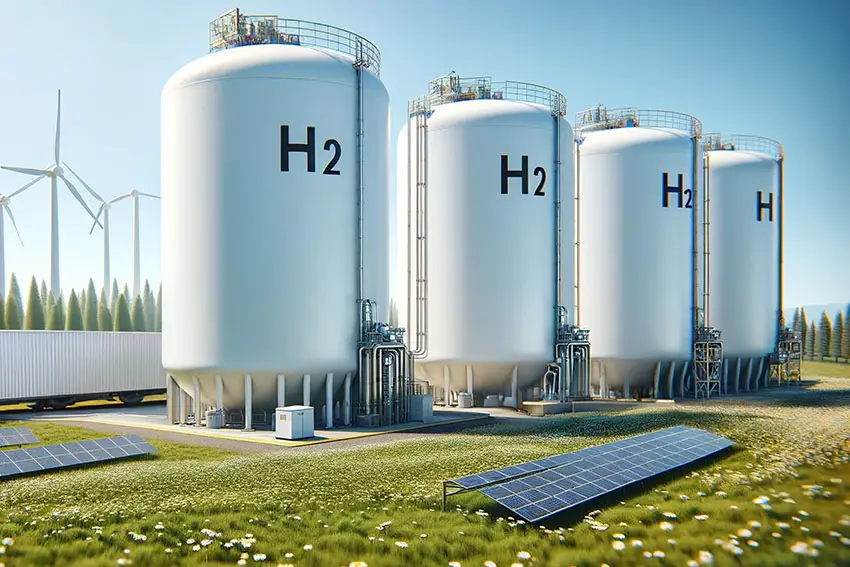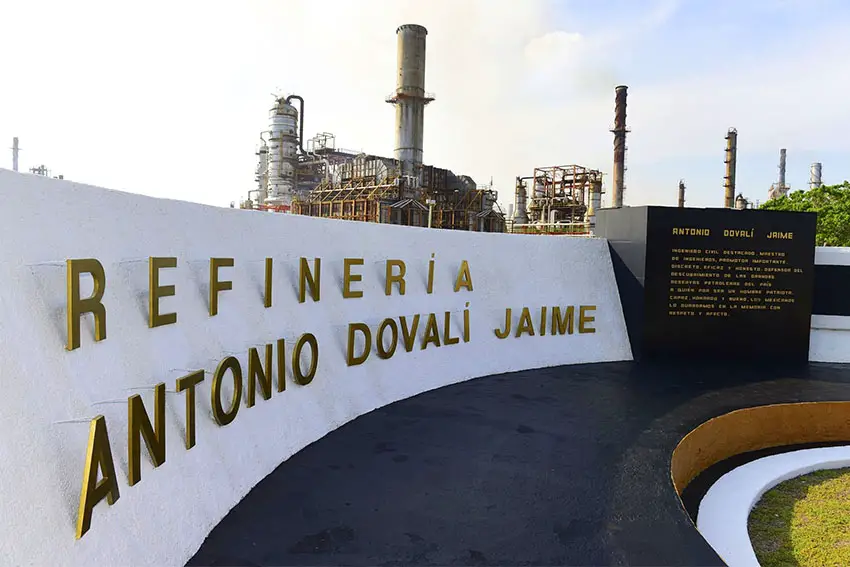Pemex and CFE could collaborate on green hydrogen project

Mexico’s state-owned Federal Electricity Commission (CFE) is looking at the possibility of entering into a partnership with state oil company Pemex to develop a green hydrogen project, according to a CFE official.
Iris Cureño, head of the CFE’s priority projects division, told Bloomberg Línea that the state-owned electricity company sees Pemex as a “commercial partner” with which it could create various green hydrogen “synergies,” given that the state oil company is Mexico’s largest user of hydrogen.

“It could be a synergy where CFE produces hydrogen [for Pemex] or just the renewable energy for its processes,” she said.
“… The most important thing is that [the green hydrogen] is used where it is produced,” Cureño said.
Green hydrogen is hydrogen produced through the electrolysis of water with renewable energy.
Cureño told Bloomberg Línea that the best place to develop a green hydrogen project would be Pemex’s refinery in Salina Cruz, a port city on the Pacific coast of Oaxaca.
She noted that Pemex, in its 2023 sustainability plan, outlined a long-term business opportunity to produce green hydrogen for both domestic use and export. The plan cited the opportunity to form a green hydrogen joint venture with the CFE.
Oil refineries use hydrogen to produce fuel with lower quantities of sulfur, which helps to reduce contamination. Most refineries use natural gas to produce hydrogen, which is colorless, odorless, nontoxic and highly combustible.


Whereas the common process to create hydrogen generates carbon dioxide, there are no emissions associated with the production of green hydrogen.
Incoming Pemex CEO Víctor Rodríguez Padilla said late last month that the state oil company would play a “fundamental role” in developing renewable energy sources, declaring that it “won’t limit itself to making oil and gas condensate as it has always done.”
But any effort to produce green hydrogen “faces multiple challenges,” Bloomberg Línea reported. The first is the lack of specific regulations in Mexico, the news site said.
The Energy Ministry issued green hydrogen guidelines earlier this year, but Cureño said that a regulatory framework is still needed to govern the production, domestic commercialization and exportation of the gas.
The CFE official also said that the costs associated with green hydrogen production are currently “very high.”
She said that the state-owned electricity company is collaborating with academics in Mexico to develop Mexican technology for the production of green hydrogen to avoid reliance on expensive imported equipment.
Luca Ferrari, a geoscientist at the National Autonomous University, told Bloomberg Línea that obstacles to the success of green hydrogen lie in the low energy efficiency, high production cost and corrosive properties of the gas.
President-elect Claudia Sheinbaum is committed to developing more renewable energy sources in Mexico, one of the few points of difference between her and President Andrés Manuel López Obrador, who has championed the ongoing use of fossil fuels.
Sheinbaum, who will take office Oct. 1, has pledged to invest more than US $13 billion in a renewables-focused energy plan.
If the idea to produce green hydrogen at Pemex’s Salina Cruz refinery eventuates, it could contribute to the development of the Isthmus of Tehuantepec as a green hydrogen hub.
López Obrador said late last year that a Danish fund would invest US $10 billion in a green hydrogen plant in Ixtepec, located inland from Salina Cruz on the isthmus between the Pacific coast of Oaxaca and the Gulf coast of Veracruz.
With reports from Bloomberg Línea
Source: Mexico News Daily

